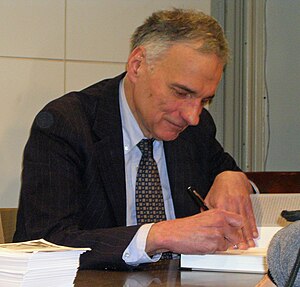Populist Party of Maryland
Populist Party of Maryland | |
|---|---|
| File:Populist Party of Maryland.PNG | |
| Founded | 2003 |
| Headquarters | Annapolis, Maryland |
| Ideology | Populism |
| Colors | Black |
| Website | |
| www | |
The Populist Party of Maryland (PPMD) is a populist political party active in Maryland since 2003.
The PPMD originated as a vehicle for ballot access for the 2004 Ralph Nader presidential campaign. Unlike such groups in other states, the PPMD organization has survived beyond 2004, laboring to field candidates for local political offices. In 2006, Populists launched a campaign for governor of Maryland, nominating Chris Driscoll, their state chairman as their candidate. Driscoll chose Ed Rothstein, a Baltimore labor organizer as his running mate. The Populist candidates emphasize the Populist alternative to Liberalism and Conservativism, tax cuts for working people through the Tobin tax, a "split-rate" land value tax, employee- or consumer-owned electric companies and municipal utilities (banned by Maryland state law since the late 1990s under energy reforms enacted by the Democratic General Assembly), and promoting government promotion of employee ownership and control of workplaces through employee stock ownership plans.
Origin[edit]

The Ralph Nader campaign chose to create a local "Populist Party" in states where ballot access is more readily available by forming a new political party than by filing as an independent candidate.
These "Populist Parties" are inspired by 1890s American political party of that name and have no connection to the late-twentieth century Populist Party, which ran candidates such as David Duke and Bo Gritz and was widely regarded as a racist, white supremacist organization.
In Maryland, the Populist Party only succeeded in putting Nader on the ballot after challenges from the Maryland Board of Elections and the local Democratic Party. The PPMD submitted a petition of nearly 15,000 signatures on August 2, a number more than sufficient to achieve official party status and a ballot line, but this was rejected under a local ballot access law as a number of the signees had moved between counties since their voter registration. On September 20, the Maryland Court of Appeals found the restricting law unconstitutional and ordered the Board of Elections to accept the petition for Nader and Camejo.
Continuation[edit]
The party conceived a "Unity Campaign" with the idea of bringing together Green Party, Libertarian Party, and Populist voters in support of the fusion ticket of U.S. Senate candidate Kevin Zeese, a founder of the PPMD and 2004 press secretary for Ralph Nader.
According to Chris Driscoll, the state party chairman, the party plans to run candidates for municipal, county, state and federal seats, under the slogan "Democracy and a Better Paycheck Too."[citation needed] The Populist Party of Maryland's rank and file and leaders have drafted a program calling for an end to the "corporate crime wave," cleaning up widespread political corruption in the capital city of Annapolis, and enacting legislation favorable to employees, employee-owned businesses and small business owners, small landlords, etc.
In August 2008, the Populist party was reconstituted as the Independent Party. Its membership soared from 5 to 35,000 at one point in May 2010, after all independent voters were counted as members of the new party, blurring the distinction between 'independent' and 'Independent'. However, the Independent Party of Maryland was dissolved by the State Board of Elections on June 3, 2010 due to its inactive campaign finance account.[1]
References[edit]
- ↑ "Independent Party dead in Maryland". Independent Political Report. Web Alaska. 2010. Retrieved December 23, 2012.
External links[edit]
- Maryland Populist Gubernatorial Campaign
- Nader/Camajo ballot access in Maryland
- Maryland State Archives page
- Kevin Zeese for U.S. Senate
This article "Populist Party of Maryland" is from Wikipedia. The list of its authors can be seen in its historical and/or the page Edithistory:Populist Party of Maryland. Articles copied from Draft Namespace on Wikipedia could be seen on the Draft Namespace of Wikipedia and not main one.

